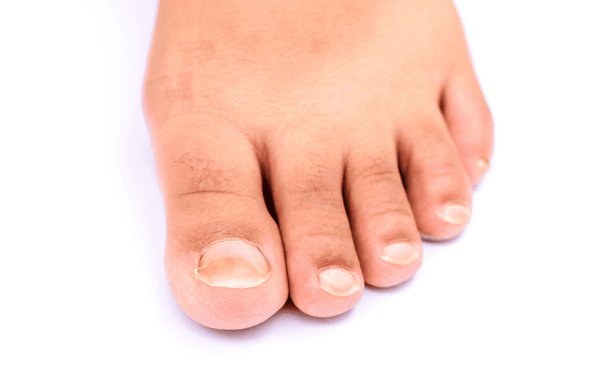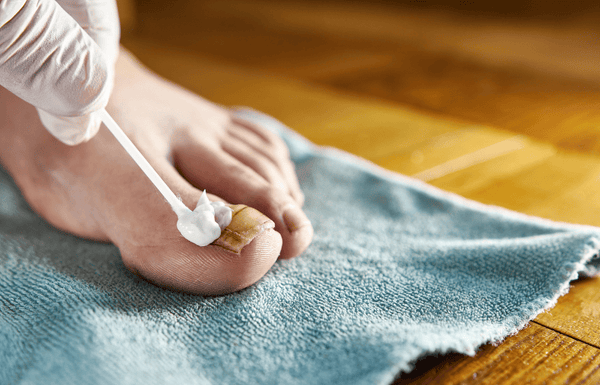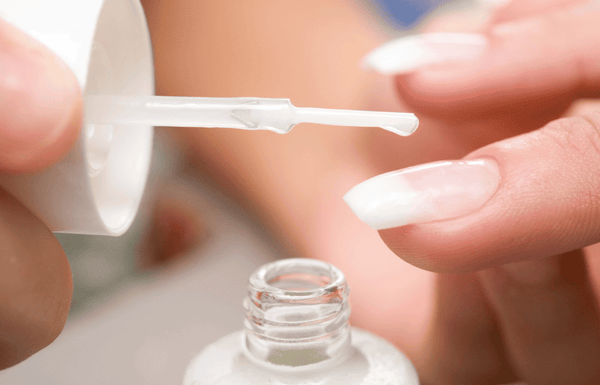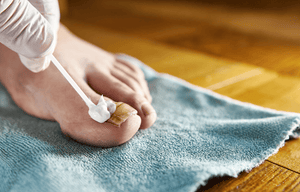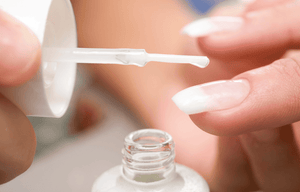
Hands and feet are constantly exposed to the elements and an untold amount of irritants and synthetics (hello microplastics), making them susceptible to lots of skin issues. The most common complaints are dryness, flaking, and itching.
Often, the culprit is simple dry skin, but these symptoms can also be tell-tale signs of a more complex problem: a fungal infection.
It's surprisingly common to confuse dry skin with fungal infections, as their initial presentations are super similar.
But what works for dry skin, like a rich moisturizer, will do little for a fungal infection and can make it way worse by creating a more hospitable environment for the fungi.
Keep reading to learn the difference between dry skin and fungal infection on feet and hands, signs of fungal infection on hands or feet, and the best remedies to keep you comfortable and annihilate the fungi.
Let’s Talk More About Dry Skin
Dry skin, medically known as xerosis, is a ubiquitous, worldwide condition that can affect any part of the body, but is prevalent on the extremities due to constant exposure and use. The most common causes dry skin on hands and feet include:
- Weather: Cold, dry air in winter, or low humidity in summer, can strip the skin of its natural moisture.
- Frequent Washing: Over-washing hands with hot water and harsh soaps can remove the skin's protective oils. Prolonged hot showers can also dry out the skin on your feet.
- Irritation: Contact with detergents, chemicals, or abrasive materials can irritate the skin and cause dryness.
- Medical Conditions: Eczema (atopic dermatitis), psoriasis, and underlying health issues like hypothyroidism can manifest as chronic dry skin.
- Aging: As we age, our skin naturally produces less oil, making it more vulnerable to dryness.
The typical symptoms of dry skin are obvious, like flaking, scaling, roughness, tightness, itching, and mild cracking.
If left unaddressed, dry skin can sometimes progress to more severe symptoms, including deep fissures that can be painful and may bleed. These deep cracks also create entry points for bacteria, potentially leading to secondary bacterial infections.
What Is a Fungal Infection?
Fungal infections of the skin are caused by microscopic organisms that thrive in warm, damp, and dark environments. They feed on keratin, a protein found in skin, hair, and nails.
Since fungi love moisture and warmth, areas between the toes, the soles of the feet, and sometimes the palms of the hands are prime targets. Public showers, locker rooms, and swimming pools are common places to pick up fungal spores.
Common types of fungal infections affecting the hands and feet include athlete’s foot (tinea pedis), hand fungus (tinea manuum), and toenail fungus (onychomycosis). Here are the typical symptoms of a fungal infection:
- Redness
- Scaling
- Itching
- Burning
- Cracking
- Blisters
- Odor
- Nail bed changes
Differences Between Dry Skin and Fungal Infections
Location
Foot fungus often starts between the toes, especially the fourth and fifth toes, and can spread to the soles and sides of the feet. Hand fungus often affects only one hand and can look similar to athlete's foot.
Dry skin, on the other hand, tends to be more generalized, affecting the entire foot, heels, or knuckles of the hands.
How It Feels
While both can itch, the itching from a fungal infection is more intense, accompanied by a burning or stinging sensation. Dry skin's itch is usually duller and more related to tightness.
Appearance
Fungal infections often present with more pronounced redness, distinct scaling, and can form circular patches with raised borders (aka classic ringworm appearance). Blisters are also a common sign of an acute athlete's foot.
Dry skin's flaking is usually finer, and the skin may just look dull or rough, and applying a good moisturizer will typically improve the appearance and comfort of dry skin.
However, applying moisturizer to a fungal infection will not help and may even make it worse by providing more moisture for the fungi to thrive.
When to Suspect a Fungal Infection
You should strongly suspect a fungal infection if symptoms worsen with moisture instead of improving, or if over-the-counter lotion doesn’t help or makes it worse. Spreading, severe itching, nail bed changes, and/or a distinct odor are more signs that point to fungus.
How to Treat Each Condition
Remedies for Dry Skin:
- Emollients and Moisturizers: Apply rich creams or ointments containing ingredients like urea, lactic acid, or ceramides. Do so frequently, especially after washing and before bed.
- Avoid Harsh Soaps: Use gentle, fragrance-free cleansers.
- Humidifiers: In dry environments, a humidifier can add moisture to the air.
- Lukewarm Water: Bathe and shower with lukewarm, not hot, water.
- Limit Bath Time: Keep showers and baths short.
Antifungal Treatments for Fungal Infections:
- OTC Antifungal Creams/Sprays/Powders: For mild to moderate infections, products containing clotrimazole, miconazole, terbinafine, or tolnaftate are often effective. The best spray for hand and foot fungus by Dr. AntiFungus offers convenient application with powerful, soothing ingredients for fast relief.
Try Dr. AntiFungus Antifungal Hand + Foot Spray Today
- Oral Medications: For severe, widespread, or stubborn infections, or if the nails are involved, a doctor may prescribe oral antifungal medications.
If you're unsure whether it's dry skin or a fungal infection, or if your symptoms are severe, persistent, or affecting your nails, it's best to see a healthcare professional. They can perform a simple test like a skin scraping to confirm the presence of fungus and prescribe the most effective treatment.
Prevention Tips
1. Keep Feet Dry and Clean
Wash your feet daily with mild soap and dry them thoroughly, especially between the toes.
2. Wear Breathable Socks and Shoes
Get yourself some moisture-wicking socks that contain synthetics designed to pull sweat away and shoes made of breathable materials like leather or canvas. Rotate your shoes to allow them to dry out completely.
3. Avoid Walking Barefoot in Public Places
Always wear flip-flops or shower shoes in communal showers, locker rooms, and around swimming pools to avoid picking up fungal spores.
4. Use Gentle Skin Care Products
Choose mild, hydrating soaps and moisturizers that support your skin's natural barrier without creating a damp environment.
5. Regularly Moisturize (for dry skin)
Consistent moisturizing helps maintain skin hydration and prevents the severe cracking that can create entry points for infections.
Treating Hand & Foot Fungus at Home
Knowing the difference between dry skin and a fungal infection on your hands or feet means getting the right treatment and finding relief.
Although both conditions present with itching and flaking, the distinct signs of fungal infection on the extremities, like intense burning, specific patterns of redness and scaling, and a worsening with moisture can help you tell the difference between the two.
If your symptoms persist or worsen, or if you're simply unsure, don't hesitate to seek professional medical advice.
Treat hand and foot fungus at home with Dr. AntiFungus antifungal hand + foot soak and spray! These doctor-formulated, doctor-recommended topicals contain prescription-grade terbinafine (a powerful antifungal) and soothing anti-inflammatory ingredients for rapid relief.
